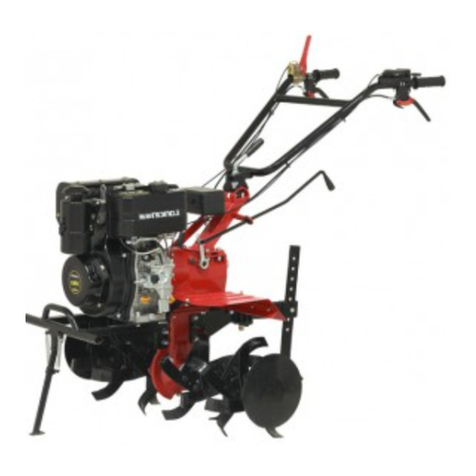
1
Foreword
Thank you for purchasing our mini tiller
It is the accelerator for your building of a richer life.
With a small size, a light weight, multiple functions, high rotary tilling efficiency, ability to work on
mountains, in waters, to cross ridges of fields and ditches, and easy transport and operation of turning around,
this model of mini tiller is especially suitable for work in mountain areas, hilly areas, arid fields, irrigated
fields, orchards, gardens, arch-roofed sheds, etc.
Its basic functions include rotary tilling, trenching, ridging and transportation. With the help of
appropriate accessories, it can also used for pumping, irrigation, insecticide spraying, harvesting, power
generating, fertilizing, seeding, seed extraction, threshing, climber cutting, grinding to produce thick liquid,
etc., besides, it is simple in structure, easy to maintain and repair, and fuel-efficient, all these features make it
an ideal mini farming machine.
It is a good helper for building a richer life of your family.
Warning! Unauthorized reproduction of this manual or any part of it for any other purpose is prohibited;
when the mini tiller is resold, this manual, as part of the mini tiller, shall be transferred with the mini tiller.
Warning! Please pay special attention to the following information:
Please read carefully this operation and maintenance manual before operation and strictly comply with
the manual while operating. If you operate in compliance with the manual, the mini tiller designed by our
company can work safely and reliably without damage to equipment and personal injury. Should you not
operate in compliance with the manual, there may occur severe damage or injury to your equipment or your
body.
Note! Should there be any problem with the machine, or should you have any doubt about it, please contact
our company’s local sales agent.
Let’s join our hands to create a better life!






























